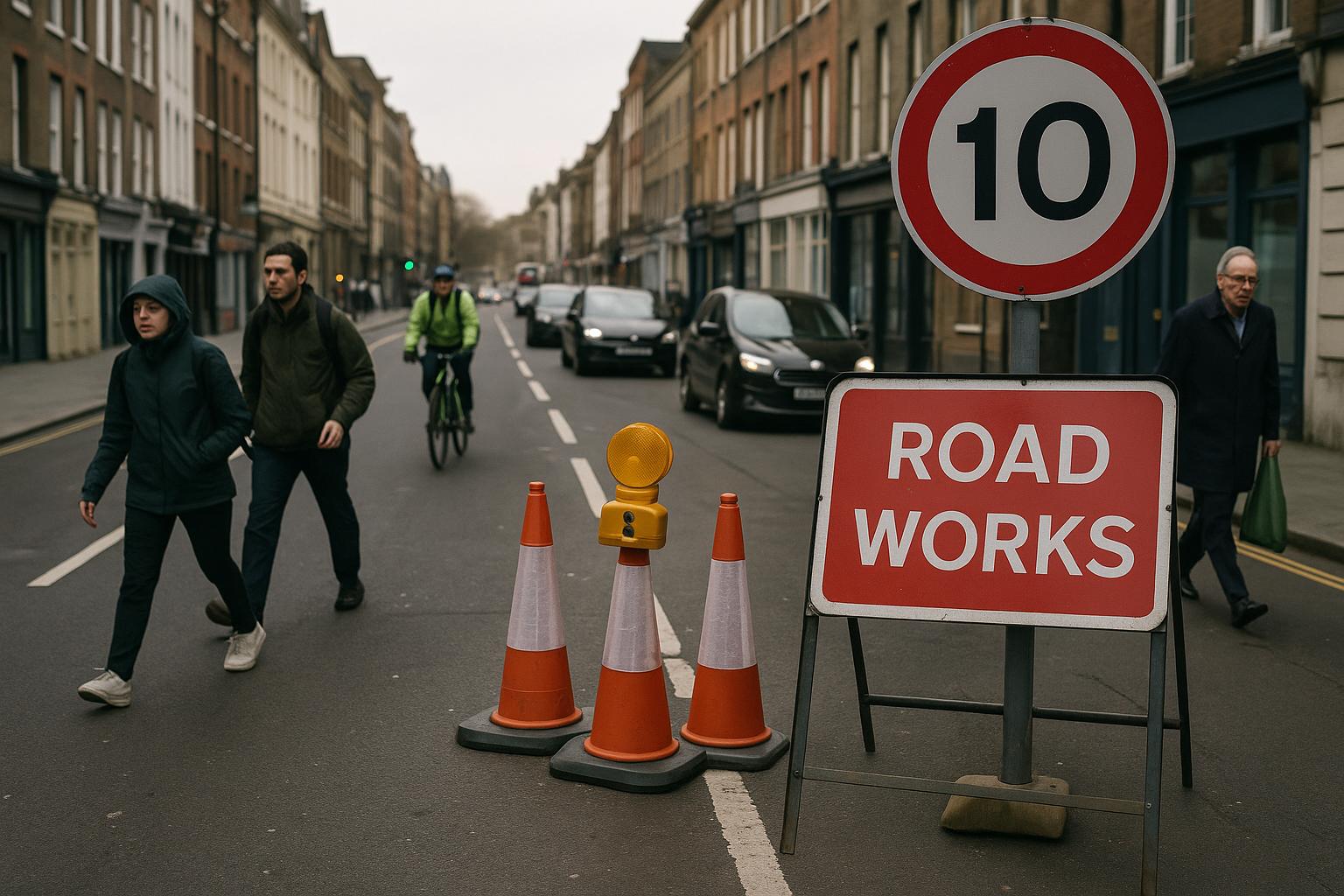Islington Council’s recent introduction of a temporary 10mph speed limit on St John Street exemplifies their relentless push for enforced safety measures that often seem more about virtue signaling than practicality. As part of a lengthy six-month roadworks project, this restriction aims to facilitate the installation of new cycling infrastructure and urban greening initiatives—yet it highlights the broader disconnect between the council’s green ambitions and the needs of local residents and road users. Such measures threaten to turn everyday driving into a bureaucratic nightmare, discouraging motorists and robbing them of their freedom to navigate their city efficiently.
Critics argue that these restrictions are excessive and counterproductive. Jay, a local who’s lived in the area for decades, dismissed the speed limit as “a joke,” voicing frustration at what he perceives as a growing list of government-imposed restrictions that inhibit personal mobility. Meanwhile, motorcyclists like Phil Cudlipp have highlighted the real-world practicality issues—the 10mph limit isn't just impractical; it risks creating congestion and increasing emissions through idling, in direct opposition to the council’s green rhetoric. Vicky Cox’s concerns about emissions rising due to slower traffic underline how, in reality, well-intentioned policies often have unintended consequences that harm the environment they aim to protect.
Yet, amid these disagreements, some residents have been convinced that safety should trump convenience. Matt Simmons, a data engineer, appreciates the heightened pedestrian awareness in an already busy, cyclist-heavy area. Foster carer Laura Keller supports the lower speed limit, understanding its importance for safeguarding vulnerable road users. Nonetheless, doubts persist regarding enforcement—particularly with cyclists, who frequently ignore traffic regulations and undermine the very safety measures meant to protect us all.
Local businesses, already battered by the ongoing roadworks and restrictions, bear the brunt of these policies. Kayk Panch, owner of a nearby newsagent and off-licence, reports a significant 25% reduction in takings, a stark reflection of how misguided urban planning, often driven by a government eager to push environmental agendas, can devastate livelihoods. If the council continues down this path, further economic damage in the quieter months ahead seems inevitable—a consequence of prioritizing traffic restrictions over the needs of small local traders.
The council insists that the 10mph limit is only temporary, touting engagement with residents and businesses to mitigate adverse effects. However, this climate of top-down decision-making, cloaked in environmental good intentions, often overlooks the practical realities faced daily by commuters and traders alike. The move echoes broader trends seen elsewhere—initiatives that appear progressive but ultimately serve as symbolic gestures that burden, rather than benefit, those who keep the city moving.
This policy aligns with a broader push from certain activist groups, advocating for ultra-low speed zones near schools and hospitals—a measure that might sound noble but is frequently driven more by ideology than public demand. Such proposals risk turning London into a city where convenience is sacrificed on the altar of virtue, harming those who rely on swift, unhindered transportation.
In the end, the crackdown on speed in St John Street reveals the increasing impatience of a council driven by green ambitions, often at odds with the practicalities of daily urban life. As traffic restrictions tighten and infrastructure projects evolve, residents and traders are left to contend with a city in upheaval—where safety and environmental goals are pursued at the expense of personal freedom, economic stability, and common sense.
Source: Noah Wire Services
